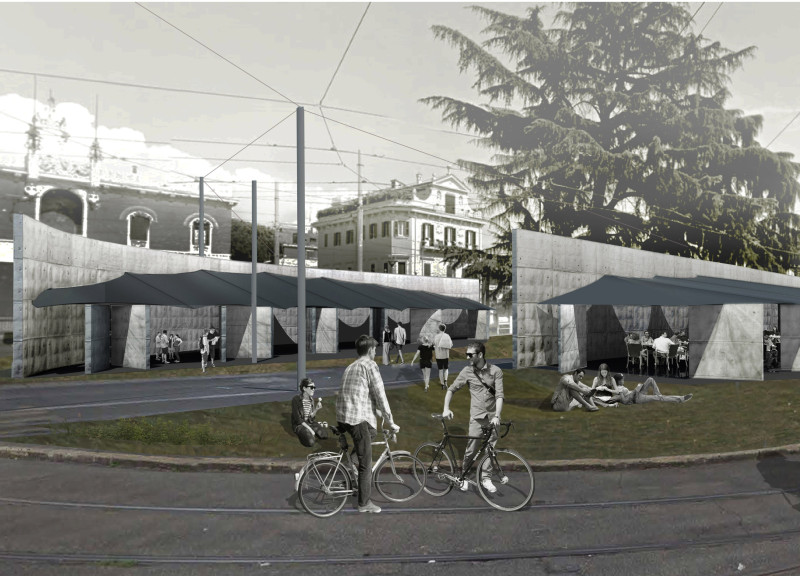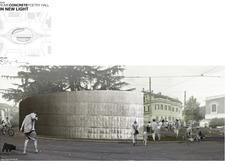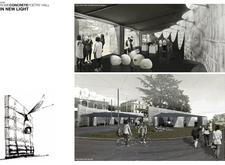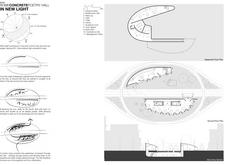5 key facts about this project
## Overview
The Concrete Poetry Hall is situated in Rome, designed to serve as a cultural venue that bridges the realms of architecture and artistic expression. The architectural intent focuses on embodying the qualities of poetry through the building's materials and spatial configurations. The design aims to reflect the fluidity of poetry, capturing a dialogue between the physical structure and its surroundings while fostering a deep engagement with its users.
## Material Expression
Reinforced concrete serves as the primary material for the building's construction, showcasing a thoughtful integration of structural and aesthetic elements. Metal formwork techniques are employed to craft textured surfaces that illustrate the dynamic forces inherent in the material. Tension cables are utilized to allow flexible responses to environmental influences, while compressive struts ensure structural stability while contributing to the overall visual depth. Additionally, strategically placed glass elements enhance transparency and natural light, facilitating a connection between indoor and outdoor spaces.
## Spatial Configuration
The spatial organization of the Concrete Poetry Hall is intentionally crafted to promote interaction and accessibility. The entrance lobby acts as a welcoming threshold to separate public and private sectors. A multifunction hall provides a versatile space for a variety of events, while a formal conference hall supports structured gatherings. Complementary café and book stall areas encourage social engagement, making the hall a lively community hub. The site plan further enhances this connectivity by incorporating green spaces that encourage pedestrian movement, situating the hall as an integral part of the urban landscape.
The design incorporates dynamic wall surfaces that shift in texture and visual interest with changing light and perspectives. This thoughtful adaptation of natural light throughout the building enhances the sensory experience. Furthermore, the hall emphasizes a connection to its landscape, inviting users to engage with the surrounding environment beyond its physical boundaries.





















































